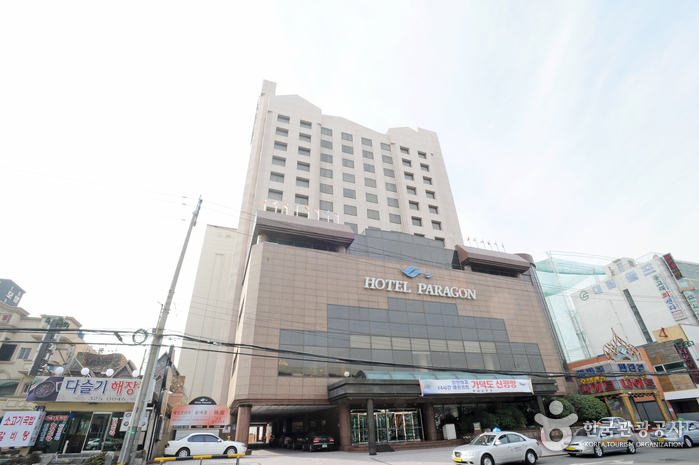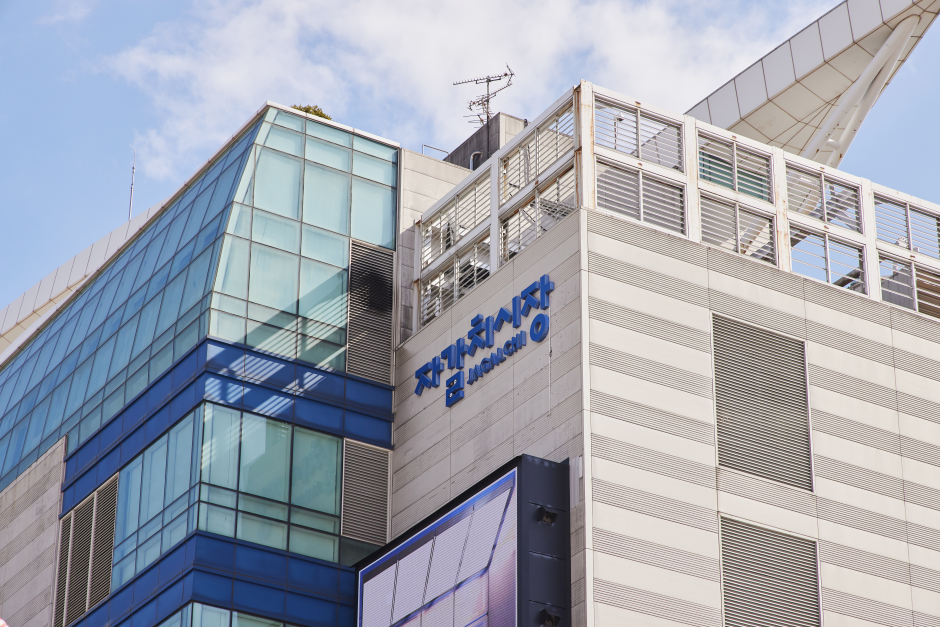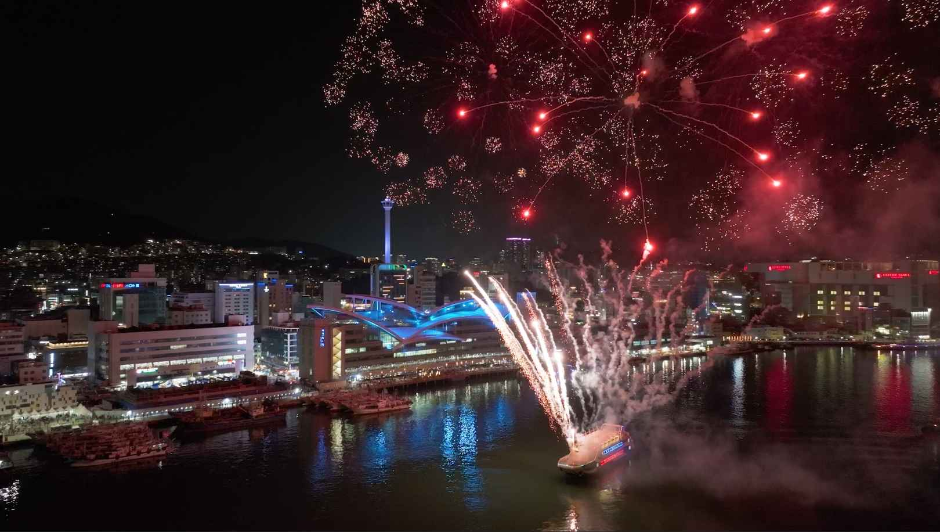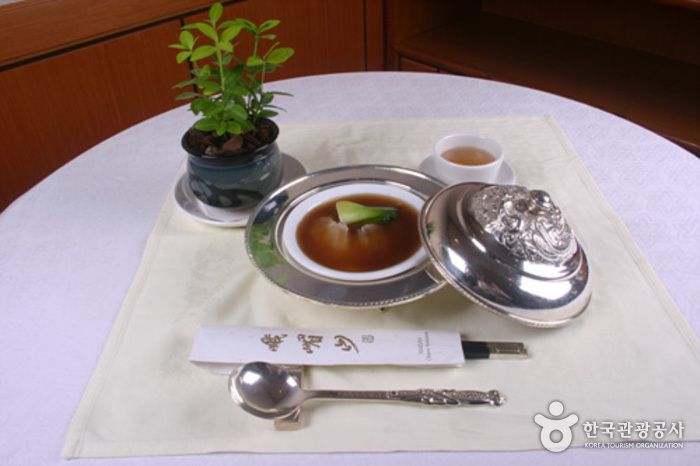Hotel Paragon (호텔 파라곤)
7.3Km 2025-06-04
46, Gwangjang-ro, Sasang-gu, Busan
Hound Hotel Premier Nampo [Korea Quality] / 하운드호텔 프리미어 남포[한국관광 품질인증/Korea Quality]
7.4Km 2023-04-13
24, Bosu-daero, Jung-gu, Busan
+82-10-5610-0679
Located 5 min away by foot from Jagalchi Station of Busan Metro Line 1, Hound Hotel is a brand-new business hotel revolving around the concepts of “healing within the urban space” and “sensory revitalization.” Its proximity to Jagalchi Market, Bupyeong Kkangtong Market, Gukje Market, and Nampo-dong offers plenty of opportunities for gastronomy, shopping, and tourism between resting. There are a large variety of rooms available, all furnished with monotone, warm pastel, or brown tones and chic interior items. All rooms are equipped with high-quality bedding, sofas, and work desks for business travelers. The bathrooms come with large bathtubs and premium amenities, making it a great choice for healing. The Balcony Double’s terrace reminds guests of more exotic destinations, with its rattan chair and table. Baby cribs are free for rent for family travelers, and barrier-free rooms and elevators are available for guests with disabilities. Moreover, the hotel has a seminar room (available with extra charge) and a rooftop for enjoying the view of the city at night. The hotel also offers luggage storage and concierge services. 24 hr services in English, Japanese, Chinese, and Russian are available at the front desk.
La Valse Hotel Busan [Korea Quality] / 라발스호텔 [한국관광 품질인증/Korea Quality]
7.4Km 2023-04-13
82, Bongnaenaru-ro, Yeongdo-gu, Busan
+82-51-790-1510
This 29-story-high hotel towers over the skyline of Yeongdo-gu, just past the Busanhangdaegyo Bridge. Its greatest strength is the view of the sea, which can be enjoyed from most of the rooms. Different room types offer a view of the Busanhangdaegyo Bridge, Yeongdodaegyo Bridge, Busandaegyo Bridge, and other bridges that connect Yeongdo area with Busan, the lively heart of the city during the day, and the bright lights of Busan’s harbor at night. There are 380 rooms in the hotel, divided into 14 types, such as the Standard Terrace Ocean coming with a terrace and a bubble bath; Corner Double Half Ocean, which has a spacious view of the sea thanks to its window wall; and Corner Double Ocean. La Valse Sky Cafe & Bar serves the hotel’s breakfast, while the La Valse SKY29 (Rooftop) offers a great view of the city center on the 29th floor. Nampo Station on Busan Metro Line 1 and Kangkangee Arts Village are located 10 min by foot, while Busan’s other famous sights like Huinnyeoul Culture Village, Jagalchi Market, and Songdo Sea Cable Car are reachable in 10 min by car.
Mercado Jagalchi de Busan (부산 자갈치시장)
7.4Km 2025-04-09
Jagalchihaean-ro 52, Jung-gu, Busan
Festival Jagalchi de Busan (부산자갈치축제)
7.4Km 2024-09-27
Jagalchihaean-ro 52, Jung-gu, Busan.
051-243-9363
El Mercado Jagalchi de Busan es la concentración de productos pesqueros más grande del país, y es uno de los lugares turísticos más famosos de Busan. En los puestos de comidas que se encuentran instalados en el mercado, podrá disfrutar de una infinita variedad de platos a precios asequibles, de los cuales se destacan las anguilas asadas y la carne de ballena, etc.
Museo de Historia y Experiencia de Samjin Eomuk (삼진어묵체험·역사관)
7.5Km 2023-02-08
Taejong-ro 99-beongil 36, Yeongdo-gu, Busan
Mercado Bongnae de Yeongdo (영도봉래시장 / 봉래시장)
7.5Km 2024-01-24
Taejong-ro 113-beongil 39, Yeongdo-gu, Busan
AREA6 (아레아식스)
7.5Km 2023-02-09
Taejong-ro 105-beongil 37-3, Yeongdo-gu, Busan
Puente Yeongdodaegyo (영도대교)
7.5Km 2021-04-26
Taejong-ro 46, Yeongdo-gu, Busan
+82-1670-8114
Es el puente que conecta Nampo-dong y la isla Yeongdo, construido durante la ocupación japonesa (1910-1945).
Amisan (아미산)
7.5Km 2020-04-13
154, Haeundaehaebyeon-ro, Haeundae-gu, Busan
+82-54-747-0131
Named after Amisan Mountain in China, Amisan opened in January 1996 at the Marina Center in Busan. It’s a popular restaurant among Chinese food lovers because of the excellent taste and quality service. The restaurant is also known to be visited by popular public figures as well as celebrities.

![Hound Hotel Premier Nampo [Korea Quality] / 하운드호텔 프리미어 남포[한국관광 품질인증/Korea Quality]](http://tong.visitkorea.or.kr/cms/resource/67/2651267_image2_1.jpg)
![La Valse Hotel Busan [Korea Quality] / 라발스호텔 [한국관광 품질인증/Korea Quality]](http://tong.visitkorea.or.kr/cms/resource/51/2709251_image2_1.jpg)




 Español
Español
 한국어
한국어 English
English 日本語
日本語 中文(简体)
中文(简体) Deutsch
Deutsch Français
Français Русский
Русский